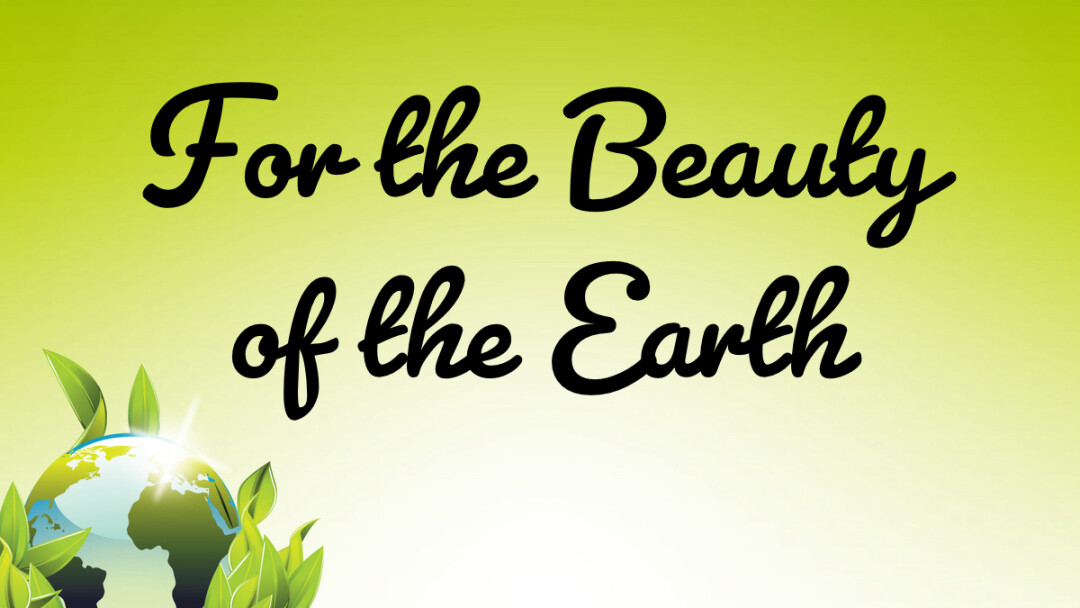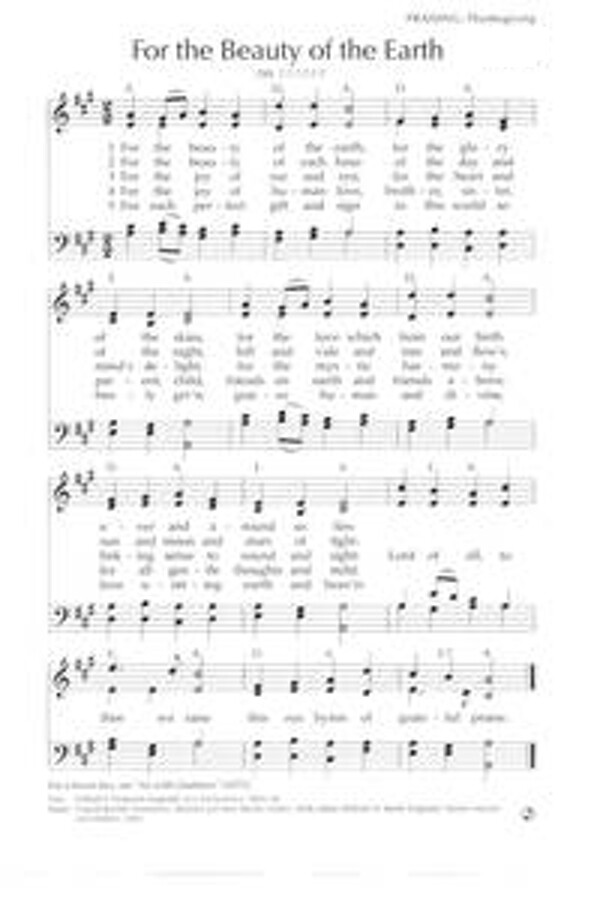

On Sunday, September 21, 2025, the worship postlude at Pender UMC was a beautiful piano/organ arrangement of “For the Beauty of the Earth” by Jerry van der Pol.
This beloved hymn of praise was offered by Jane McKee on piano, Mary O’Connor on organ, and accompanied by Abe Garver on cello.
First published in 1864 by Folliott S. Pierpoint, “For the Beauty of the Earth” is a hymn of thanksgiving that celebrates God’s creation and the gift of life itself. Its timeless message reminds us to give thanks for the wonders of nature, the joy of human love, and above all, the love of Christ.
On August 25, 2024, at Pender’s Traditional Worship service, the Sanctuary Choir, along with the congregation, lifted their voices to sing the timeless hymn "For the Beauty of the Earth" (UMH #92). Accompanied by the beautiful harmonies of Heidi Jacobs on piano and the deep, resonant tones of Mark Severeniuk on tuba, this beloved hymn was brought to life in a moving tribute to the wonders of creation and gratitude to God.
"For the Beauty of the Earth"
by Folliot S. Pierpoint,
The United Methodist Hymnal, page 92
Folliot Sandford Pierpoint (1835-1917), a graduate of Queens’ College, Cambridge, and a teacher of classics at Somersetshire College, left a lasting legacy in Christian hymnody with one of the most cherished hymns, “For the Beauty of the Earth.”
Pierpoint authored several poetry collections, including *The Chalice of Nature and Other Poems* (1855) and *Lyra Jesu* (1858). The words of “For the Beauty of the Earth” first appeared in the second edition of *Lyrica Eucharistica, The Hymnal Noted* (1864). Originally written for the celebration of the Eucharist, the hymn was initially published as a poem titled “The Sacrifice of Praise,” consisting of eight, four-line stanzas.
The refrain, “Christ, our God, to thee we raise / This our sacrifice of praise,” reflects the theological emphasis of the Lord’s Supper as a sharing in Christ’s sacrifice. British hymnologist J. R. Watson suggests that Pierpoint was inspired by a view of his native city of Bath on a spring day. The hymn also echoes the post-Communion prayer in the *Book of Common Prayer* (1662), which speaks of offering a “sacrifice of praise and thanksgiving.”
Although the original hymn contained eight stanzas, it has been pared down to six in *The United Methodist Hymnal*. Each stanza expresses gratitude for a different aspect of God’s creation: the earth and its beauty, our senses, human love, the church, and the gift of God as revealed in Christ. These themes of praise resonate across Christian traditions, making the hymn fitting for various liturgical occasions beyond its Eucharistic roots.
Some of the omitted stanzas include reflections on the martyrs, prophets, and the Virgin Mary, typical themes for hymns written by Church of England hymnwriters in Pierpoint’s era. Yet, the remaining verses continue to inspire gratitude for the wonders of creation and God’s many gifts, making “For the Beauty of the Earth” a timeless expression of faith.
Conrad Kocher’s tune DIX (1838) is not the only tune to which this text is sung, but is undoubtedly the most popular in the United States. British Composer John Rutter (b. 1945) renewed interest in this text with his popular anthem setting composed in 1978.


